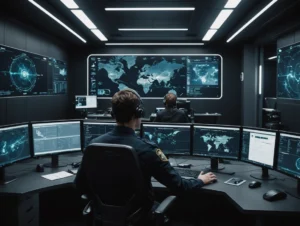CrewAI Long-Term Memory: Transforming Cybersecurity Anomaly Detection
In the ever-evolving landscape of cybersecurity, the volume and sophistication of threats have far surpassed the capacity of manual human analysis. Traditional security systems, often reliant on static rules and signatures, struggle to identify novel attacks or subtle, multi-stage intrusions. The next frontier of defense lies in autonomous AI agents that can not only analyze data in real-time but also learn from experience, building a contextual understanding of a network’s normal behavior to better spot deviations.
CrewAI, a powerful framework for orchestrating collaborative AI agents, introduces a game-changing capability: Long-Term Memory (LTM). This article explores how CrewAI’s memory architecture transforms anomaly detection from reactive, point-in-time analysis into a proactive, continuously learning sentinel, capable of adapting to new threats and recalling past incidents with unprecedented intelligence.
Understanding CrewAI’s Memory Architecture
CrewAI implements a multi-layered memory system inspired by human cognition:
- Short-Term Memory (STM): Tracks context for the current conversation or task.
- Long-Term Memory (LTM): Persists insights and observations across sessions.
- Entity Memory: Organizes knowledge about specific entities (users, IPs, hosts, applications), enabling agents to reason with structured context.
Under the hood, CrewAI can connect to vector databases (like ChromaDB, Pinecone, or Weaviate) to store these memories as embeddings. This allows semantic recall: instead of keyword-matching logs, agents retrieve related past experiences by conceptual similarity.
For example, an observation such as “unusual SSH login attempt from off-hours IP” is embedded and stored in LTM. Later, when the system encounters another login anomaly, it can recall whether similar past attempts were benign (e.g., a developer on night shift) or malicious.
Example: Initializing an Agent with Memory
Here’s an illustrative setup for a CrewAI cybersecurity agent using LTM and Entity Memory:
from crewai import Agent, Crew, Task
from crewai.memory import LongTermMemory, EntityMemory
# Initialize Long-Term Memory
ltm = LongTermMemory(storage_backend="chroma", collection="cyber_memories")
# Initialize Entity Memory (to track details about users, IPs, hosts, etc.)
entity_mem = EntityMemory(storage_backend="chroma", collection="entity_knowledge")
# Create a Security Analyst agent
security_analyst = Agent(
role="Senior Cybersecurity Analyst",
goal="Detect and investigate anomalous network activity",
backstory="Expert in threat hunting and behavioral analysis.",
memory=True, # Enable memory system
long_term_memory=ltm,
entity_memory=entity_mem
)This setup ensures knowledge is persistent across sessions and shareable among agents in a Crew, creating a collective intelligence that grows smarter over time.
Why Long-Term Memory Matters in Cybersecurity
- Context over weeks/months: Unlike SIEMs that only correlate over short windows, CrewAI’s LTM builds behavioral baselines for each entity.
- Low-and-slow attacks: LTM detects anomalies that unfold gradually, such as trickle data exfiltration.
- Campaign attribution: By remembering past attacker techniques (TTPs), CrewAI can link new alerts to known campaigns, even with changed indicators.
- Smarter triage: Memory lookups add instant context—e.g., discovering that an IP seen in today’s alert was flagged for port scanning three months ago.
Workflow Example: Alert Triage with LTM
- Alert triggers: “RDP Login Success after multiple failures” for user
jdoe. - Triage agent queries LTM: past activity for
jdoeand IP192.168.1.15. - LTM shows:
jdoeusually logs in only 9–5, from corporate subnet. - Query on IP reveals: port scanning activity three months prior.
- Agent correlates: abnormal user behavior + malicious IP history = high confidence compromise.
Without memory, this might look like a harmless login. With CrewAI’s LTM, it becomes a critical incident.
Adaptive Baselines and Continuous Learning
CrewAI agents continuously refine baselines with feedback. If a flagged anomaly is confirmed legitimate (e.g., a user’s workload changes), that verdict is saved to LTM, updating the baseline. Next time, no false alarm. Conversely, if malicious, the details are memorialized—vaccinating the system against similar attacks.
Integrating LTM into Security Operations
CrewAI doesn’t replace a SOC’s SIEM—it augments it. Agents can ingest SIEM logs, enrich them, and feed prioritized alerts into a SOC’s workflow (e.g., ServiceNow or a SOAR system). Analysts can also query CrewAI’s LTM directly:
results = security_analyst.long_term_memory.search("show all incidents involving domain evil.com")This compresses hours of investigation into seconds. Analysts provide feedback (“true positive,” “false positive”), which a Feedback Agent logs into memory, ensuring the system evolves with human oversight.
Conclusion
CrewAI’s memory system represents a paradigm shift in cybersecurity anomaly detection. By endowing agents with persistence, recall, and adaptive baselining, it reduces false positives, accelerates investigations, and connects the dots across time.
In a world of ever-more-subtle attacks, a SOC armed with collaborative agents and shared memory is no longer just reactive—it becomes a living, learning digital defense organism, continuously improving its ability to protect critical assets.
Speaking of advancements in cybersecurity, the integration of AI transforms how organizations handle threats. For those intrigued by how AI enhances operational efficiency, exploring Artificial Intelligence in Cybersecurity might be insightful. Additionally, understanding the role of Vector Databases in managing vast amounts of security data can offer deep insights into modern defensive strategies.




